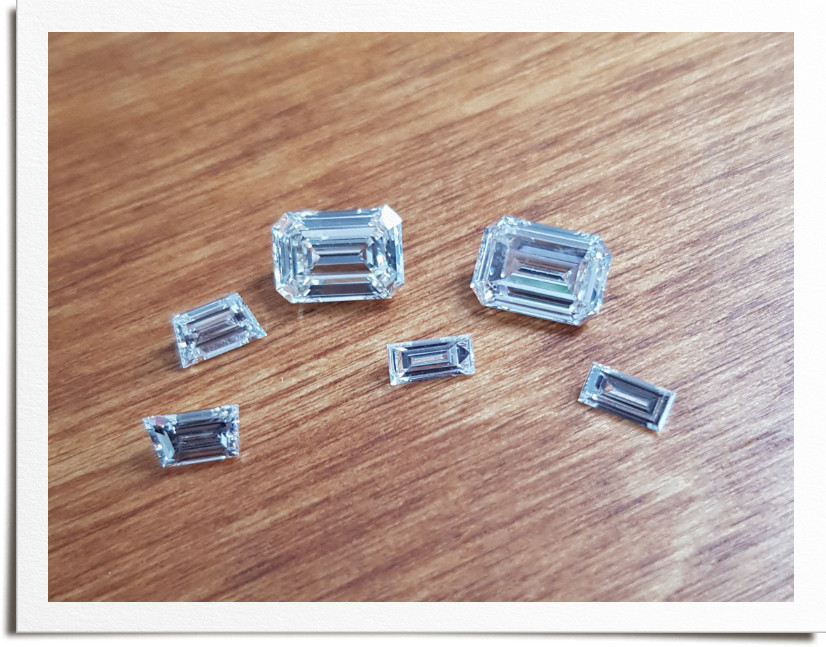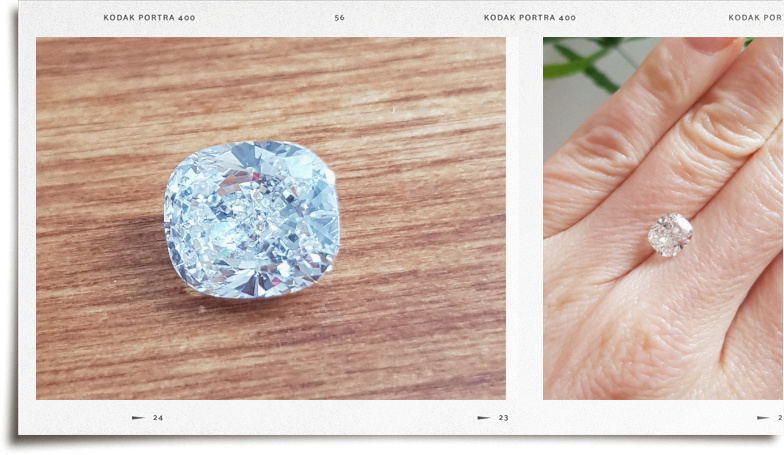"GIA Certified Diamonds", "Certified Diamonds", "All our diamonds are Certified" etc etc.. Lots of noise, what does a certificate mean anyway? Here's our take;
Diamonds, they're amazing aren't they? A portable store of wealth, the hardest substance known to man and the glittering heart of the engagement ring. They have gone from being the preserve of Queens, Kings and royalty to something that be set in silver and presented at your ten year old's birthday party. And if you want to buy a diamond, there are a multitude of sites and individuals who can help with your purchase. Including us (disclaimer).
Diamonds are priced according to their assessed characteristics. And because these are important in determining value, numerous laboratories have appeared over the decades, offering their expertise in providing an accurate report. This article looks at what a diamond report is for. And I'm going to drop a small bombshell..
There is no such thing as a diamond certificate.
It is either called a Report, or sometimes an Appraisal (depending on the body and purpose). There is a very good reason for this, which is that as at date of writing, all cut diamonds presented to any of the diamond labs (GIA, IGI, HRD, Anchorcert etc) for an evaluation are viewed by human eyes. This is the best way to do until AI gets so good that a machine can look at a diamond from a human perspective. It means however, that one pair of eyes may pick up certain characteristics differently from another set. This is for any stone grade. Reports are in theory, unbiased. But, as I've commented in several blogs, some aren't always as accurate as they might be. Because it's a human making the assessment.
So the diamond grading houses quite sensibly do not call their stone evaluations 'certificates' as this gives the impression of being a definitive document with verifiable results in it. Instead they are Reports which is an account of the stone qualities as deemed by the viewer(s). This basically covers all the bases if the stone data is considered inaccurate by another party (diamonds can be sent for another appraisal if the viewer disagrees with the lab report).
What is the document there to cover?

GIA say that their report is the official “blueprint” of a diamond. I think that is marketing talk - it's taking it back into certificate territory, but what all these reports are there to provide is a scientifically based assessment of stone characteristics and qualities. It will tell you;
- Your stone is a diamond
- Specific measurements and shape of your diamond
- Carat Weight
- Stone proportions (which together maximise the brilliance and fire)
These qualities could all be certified, as they are measurable data. Where it becomes assessment lead, is once the characteristics of the stone are evaluated, as they can be subjective. Characteristics detailed usually include;
- Cut (for the GIA this is only included on round brilliant diamonds and should not be confused with the shape of the stone. Does this negate the 4 C's? Well, slightly, but it's still easy to remember, and cutting skill is crucial for any diamond).
- Clarity
- Colour
- Symmetry - the top view
- Polish - the finish of the diamond
- Fluorescence
Finally, where known the report will cover any treatments identified. This is more prevalent in fancy coloured diamonds, as heating stones can enhance colours and needs to be declared if the hue wasn't found in nature. But sometimes inclusions are heat or laser treated in natural diamonds to remove them, and this needs to be declared too as the diamond is no longer as found in nature.
Does an excellent diamond report mean the diamond is the best?
In short, no. Hopefully it's a really good indicator, but actually there are still stones that punch above their weight despite the report and likewise, stones that read well on paper but are not the best buy out there.

Diamond prices are still set by the vendors before they hit the lists, and they will price according to what they think they can get for the stone. So if a stone has a good report, a vendor will try to charge more regardless of appearance. Ideally the stone lives up to the evaluation. But, not always.
'Certified' Diamonds can be a headache
I've never seen a stone bought by 'certificate' that has matched appearance with value. The client has always at best got what they paid for. We make all diamonds look beautiful when we have them set and we regularly set list stones for clients (a lot of retailers refuse to do it because it can be a hassle). It can be a lot of work to ensure they look good! All have had good reports. It's just down to how the stone looks. And that is going to drive value, not the piece of paper.
Reports and Diamond Lists
Diamond reports are what drive diamond lists. It enables the individual to search their preferred set of characteristics. And they are a good way of getting diamonds to the general public that might otherwise not sell easily. Because not all stones with reports are listed.
The diamond world functions with relationships. Stones are passed by specific vendors to specific brokers to evaluate, and purchase. If they are liked, they are bought. They may never have been listed in the public domain. The deciding factor is commercial, "is this stone saleable at my standards?" Which can only be determined when the diamond is viewed.
List diamonds are guarded more carefully. A lot of work goes into finding the right stones, but if the stone is on loan and listed then it is like a house for sale, still on the market! It happens a lot in some circles, with diamond dealers trying to undercut each other for their clients.
How does it work with us? We always have a selection of diamonds to choose from. If we are looking for a particular stone, usually we receive diamond information from trusted sources, check availability (it's not always) and view each stone. Sometimes it's a yes, sometimes no, sometimes my guys may send the stone to be re-assessed. Really good stones will be purchased regardless, as they won't hang around. There are hundreds of thousands of diamonds on various lists. We don't have time to waste on that, so work with those known to supply the best looking stones who we know are trustworthy.

Looking to buy a diamond?
I'd not be doing my job properly if I didn't mention that we offer a diamond buying service, otherwise how would I know all this stuff? Or to see a few exceptional diamonds (with certificates we quite like) click here to buy online.